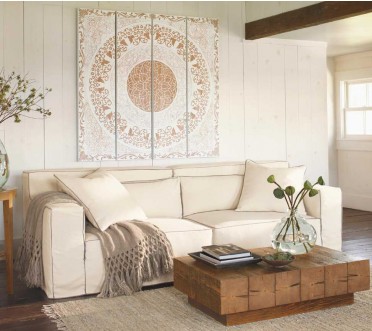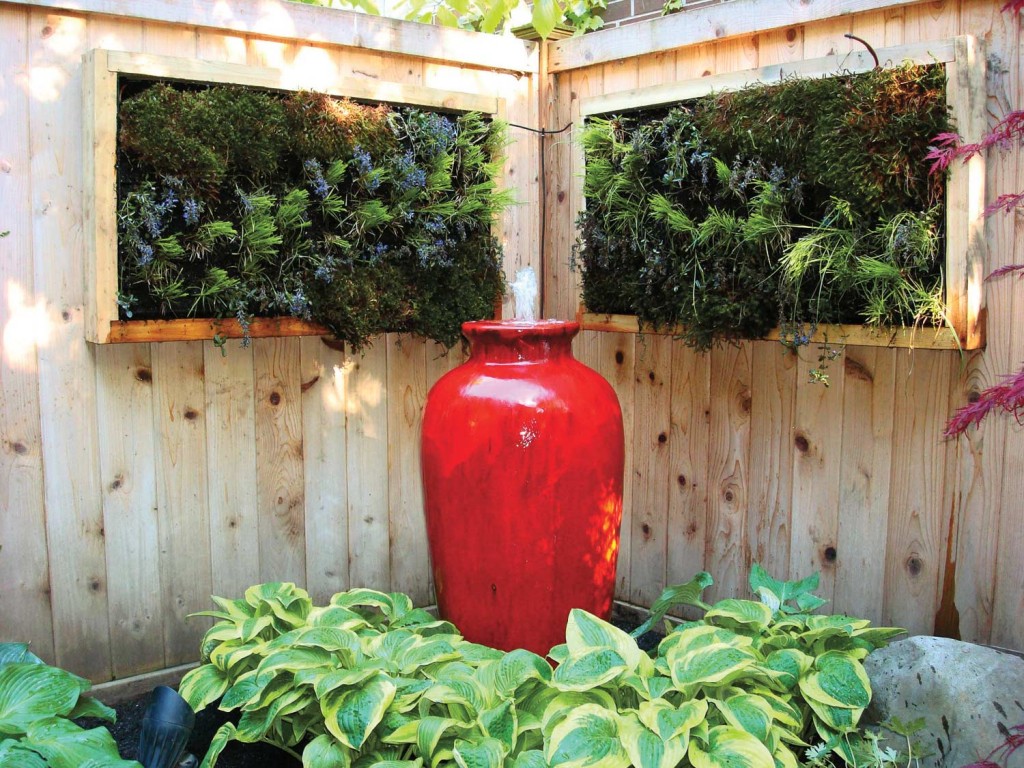There is something about the natural elements that draws us to live by the ocean – the ebb and flow of the thunderous tide, the strangled cry of seagulls, the briny spray of saltwater.
Oftentimes, that inspiration translates into our home furnishings and design, whether it be our choices in nautical-inspired décor, driftwood furnishings, or tall windows open to panoramic views of the shore. We use our oceanside homes as a retreat from the stresses of everyday urban life and to reacquaint ourselves with the natural environment.
So it’s no surprise that lately, designers and homeowners alike are becoming re-inspired by nature and investing in sustainable home design and décor. Rand Soellner, licensed architect and expert in eco-friendly home design, says that there is a “green” movement in luxury real estate. Homeowners are buying into greener estates and architects are making greener choices when it comes to designing these estates.
They are not only considering the financial value of estates, but their ecological value as well. Soellner himself has over 40 years’ worth of experience in architecture. As a member of the American Institute of Architects (AIA), his innovative work in sustainable home design has earned him headlines in national publications and numerous awards. Over the course of his some 40 years in the industry, Soellner has been involved in the design of over $3 billion worth of architectural projects.
He started his company, Home Architects, in 1984 during a time when sustainability was not the popular trend in luxury real estate that it is today. “Everybody thinks that ‘going green’ is a new thing when really, energy efficiency has been around as far back as the 1940s,” he says. “It’s only now that people are jumping on the bandwagon.” Along with designing custom luxury residences for his clientele, Soellner has made it his mission to promote sustainable practices in the construction and design of homes, as well as to educate the public about its benefits.
He is the founder of the Green Home Design University, an online course meant to educate the public as well as other professionals about energy efficiency in home design. He also invented the “Green Gauge,” an interactive digital tool that allows professionals to evaluate the ecological value of their chosen materials and methods for design projects. As defined by the U.S. Environmental Protection Agency, green building is “the practice of creating structures and using processes that are environmentally responsible and resource-efficient throughout a building’s life-cycle.” Green buildings are designed to reduce impact to the natural environment by efficiently using energy, protecting the health of its occupants, and reducing waste and environmental pollution.
Although designing a sustainable home can come with a substantial price tag, Soellner says that it’s worth the investment. “You might pay a lot up front,” he says, “But when you invest in better insulation, better windows and doors, and better roofing, you will get paid back starting immediately. That’s something everyone can understand and people will invest more in efficient homes.”
Even in the midst of a bleak real estate market, investment in sustainable design and green products has defied the economic downturn.
Besides being environmentally friendly, Soellner says that consumers have another incentive to buy green products: they often perform better than their out-of-date counterparts. “Everything is connected to the ecosystem, just as we are connected to our homes, our homes are connected to the power plants. If we can design an eco-friendly home, there is less of a demand for new power plants, and we can lower the carbon foot print of humanity on the planet,” he says. “In this way, everyone benefits from having a better designed home.”
Tips to Greener Living
Whether you live in the tropics of Mexico or you vacation in the Hamptons, an ocean home can always benefit from being eco-friendly. Real estate investors and homeowners alike are tapping into the movement of “going green.” Recently, this oceanside home in Nantucket was heralded in the headlines for its sustainable custom design. So how do you construct and furnish your eco-friendly home? We’ve consulted expert and custom home architect Rand Soellner for the answers. Sustainable living means living within your means. Here are some additional tips to having an eco-friendly home without giving up your luxe lifestyle.
Insulation
Especially for an oceanfront home where wetness and humidity is pervasive, Soellner says that the right insulation prevents moisture penetration, which prevents mold, and in turn, can prevent serious respiratory illnesses. According to Energy Star, improperly installed insulation can waste 20 percent or more of the energy you pay to heat and cool your home. To prevent air leakage, make sure that all spaces between windows and beneath doorways are blocked. The insulation itself can even be made from recycled denim material.
Lighting
Soellner says that switching your lightbulbs to CFL can save you big dollar signs on your electricity bill. He says that by simply calling your local power plant, they will oftentimes send you a package of free CFL bulbs. Trading in your outdated incandescent light bulbs for CFL allows you to consume 15-20 percent of the power you would otherwise consume. And for a warmer, more organic glow, check out these portable fireplaces
. 

Stylish and earth-friendly Greenery as décor (alternative energy sources) As usual with greener luxury products, there’s no need to forfeit style for substance. Whether it’s vegetated roofs, potted plants that serve as air fresheners, or a living wall, greenery is a great way to decorate your home as well as incorporate a green (almost literally) way of living into your everyday home life.
Furnishings and Décor
You can make your oceanfront home earth-friendly with a few simple furnishings and decorating touches. There isn’t a room in the house that you can’t incorporate sustainability, whether it’s this bowed-seated shower stool from fair trade group Mitra Bali for your bathroom or this glamorous couch by designer Cisco Pinedo, made of sustainable materials and organic cotton fabric, for your living space. You can use this reclaimed oak wine barrel as a wine cooler for your outdoor soirees and you can cover your floor indoors with a cutom rug from ecoFiber Custom Rugs. Even your furry companions don’t have to go without being green. An Earth Friendly Bumper Bed by Wet Paw Design keeps your pup pampered.


